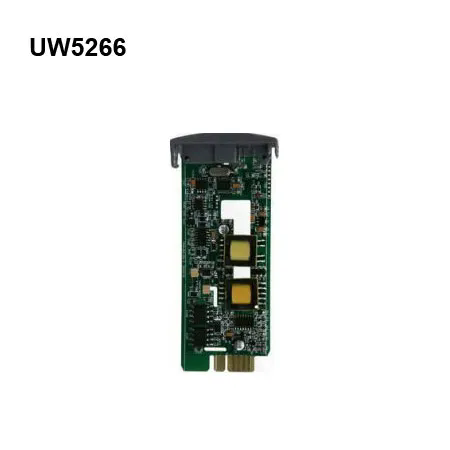Understanding Analog Output Modules: A Comprehensive Guide
2024-09-13
In the world of automation and control systems, precision and accuracy are paramount. Analog output modules play a crucial role in achieving these goals by converting digital signals into analog signals that can control various devices and processes. Whether you're designing a new control system or maintaining an existing one, understanding analog output modules is essential. In this blog, we'll dive into what analog output modules are, their applications, and how they can enhance your control systems.
What is an Analog Output Module?
An analog output module is a component of a programmable logic controller (PLC) or other control systems that converts digital signals from the PLC into analog signals. These analog signals can then be used to control devices like motors, valves, and other equipment that require continuous, variable input.
Key Components of an Analog Output Module
1. Digital-to-Analog Converter (DAC): This is the core component of the analog output module. It takes the digital signal from the PLC and converts it into a corresponding analog signal. The DAC's accuracy and resolution determine the precision of the analog output.
2. Output Channels: Analog output modules typically have multiple channels, allowing them to output several analog signals simultaneously. Each channel can be configured for different types of signals, such as voltage or current.
3. Signal Conditioning: Some analog output modules include signal conditioning features, such as filtering or amplification, to ensure the output signal is stable and accurate.
4. Communication Interface: The module interfaces with the PLC or control system via standard communication protocols, such as Modbus, Profibus, or EtherNet/IP. This interface allows for the transfer of digital commands to the module.
Applications of Analog Output Modules
1. Process Control: Analog output modules are widely used in process control systems to regulate processes such as temperature, pressure, and flow. For example, they can send signals to a proportional control valve to adjust flow rates in a pipeline.
2. Motion Control: In motion control applications, analog output modules can control the speed and position of motors. They provide variable voltage or current signals to drive motor controllers, enabling precise movement and positioning.
3. Level and Flow Measurement: Analog output modules are used to control devices that manage liquid levels or flow rates. For instance, they can adjust the speed of a pump or the opening of a valve based on feedback from sensors.
4. Industrial Automation: In industrial automation, analog output modules can control various equipment, such as conveyors, mixers, and heaters, by providing continuous control signals based on the system’s needs.
How to Choose the Right Analog Output Module
1. Signal Type and Range: Determine whether you need voltage or current outputs and the required signal range. Common voltage ranges include 0-10V or ±10V, while current ranges typically include 4-20mA.
2. Resolution and Accuracy: Consider the resolution and accuracy of the DAC. Higher resolution and accuracy are essential for applications requiring precise control.
3. Number of Channels: Choose a module with the appropriate number of output channels for your application. Modules with multiple channels can control several devices simultaneously.
4. Compatibility: Ensure the analog output module is compatible with your PLC or control system in terms of communication protocol and electrical specifications.
5. Environmental Conditions: Consider the operating environment of the module. Ensure it can withstand factors such as temperature, humidity, and electromagnetic interference.
Installation and Maintenance
1. Installation: Follow the manufacturer’s guidelines for installing the analog output module. Ensure proper wiring and connections to avoid signal degradation or interference.
2. Calibration: Regular calibration of the analog output module is essential to maintain accuracy. Follow calibration procedures as specified by the manufacturer.
3. Troubleshooting: Common issues with analog output modules include signal drift, noise, and communication errors. Regular maintenance and monitoring can help identify and resolve these issues promptly.
Conclusion
Analog output modules are vital components in modern control systems, providing the interface between digital control systems and analog devices. By converting digital signals into precise analog outputs, they enable accurate control of various processes and equipment. Understanding their functions, applications, and selection criteria will help you design and maintain effective and reliable control systems. Whether you're in process control, motion control, or industrial automation, incorporating the right analog output module can significantly enhance your system's performance and efficiency.



